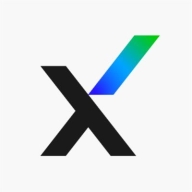

Trellix Network Detection and Response and Microsoft Defender for Endpoint compete in the network security market. Trellix has the upper hand in advanced threat detection, while Microsoft Defender offers better integration with Microsoft services.
Features: Trellix Network Detection and Response offers powerful analytical tools, zero-day attack detection, and customization options like Yara rules and sandbox capabilities. It provides detailed threat analysis and application filtering. Microsoft Defender for Endpoint is known for its integration with Microsoft services, user-friendly design, and comprehensive threat protection, including antivirus, firewall, and real-time alerts.
Room for Improvement: Trellix could enhance its user interface for easier navigation and reduce false positives. Other areas for improvement include application filtering, firewall integrations, and cloud connectivity. Microsoft Defender for Endpoint needs better integration across services, improved threat detection capabilities, more user-friendly dashboards, and reduced false positives. Greater third-party integrations and support for non-Windows systems would be beneficial.
Ease of Deployment and Customer Service: Both Trellix and Microsoft Defender offer on-premises deployments, with Trellix focusing more on on-premises infrastructure and Microsoft Defender supporting a broader range of environments. Trellix is noted for efficient customer service and technical support, while Microsoft Defender's customer service has mixed feedback.
Pricing and ROI: Trellix is recognized for high costs but significant ROI through advanced threat detection. Microsoft Defender for Endpoint is often bundled with Microsoft products, reducing costs, making it cost-effective for businesses using Microsoft's ecosystem. Both solutions offer a solid ROI by preventing breaches and reducing response times, though Trellix tends to be more expensive.
The return on investment is primarily in time savings and better observability of what's happening.
Due to our size, we don't have access to direct technical support, but the knowledge base, Microsoft Learn, and the articles available are really good.
I rate Microsoft support 10 out of 10.
The level-one support seems disconnected from subject matter experts.
Technical support needs improvement as sometimes engineers are not available promptly, especially during high-severity incidents.
Microsoft Defender for Endpoint is scalable enough to handle various devices across environments, whether they are laptops, Android devices, or operating in hybrid environments.
We managed to scale it out in a short amount of time, with two months of planning and three months of implementation on 10,000 computers.
Defender's scalability is phenomenal, and it's going to be one of the keys to resolving issues for the SOC.
Defender for Endpoint is extremely stable.
I haven't seen any outages with Microsoft.
I rate Defender 10 out of 10 for stability.
Repeated interactions are necessary due to Level One's lack of tools and knowledge, hindering efficient problem-solving and negatively impacting our experience with Microsoft support.
We have multiple endpoints, and we want to look for signals across tenants.
Providing more detailed information on how Microsoft Defender for Endpoint detects vulnerabilities.
There should be improvements in AI intelligence, faster decision-making, and a more responsive technical support team.
It costs $15 per VM for the P2 plan, which is seen as affordable for customers.
Given our extensive Microsoft licensing, transitioning to Defender for Endpoint did not affect licensing costs.
The pricing, setup, and licensing were very easy and simple.
Microsoft Defender for Endpoint provides a unified management interface allowing customers to manage their on-premises and hybrid infrastructures from a single pane.
Defender for Endpoint's coverage across different platforms in our environment is pretty good. We have devices running Linux, Mac OS, Windows, iOS, and Android. It covers all of them.
Attack surface reduction and limiting attack surface vectors are valuable features.
Trellix NDR provides an essential defense by automatically responding to network incidents that firewalls may not catch.


Microsoft Defender for Endpoint is a comprehensive security solution that provides advanced threat protection for organizations. It offers real-time protection against various types of cyber threats, including malware, viruses, ransomware, and phishing attacks.
With its powerful machine-learning capabilities, it can detect and block sophisticated attacks before they can cause any harm. The solution also includes endpoint detection and response (EDR) capabilities, allowing organizations to quickly investigate and respond to security incidents. It provides detailed insights into the attack timeline, enabling security teams to understand the scope and impact of an incident.
Microsoft Defender for Endpoint also offers proactive threat hunting, allowing organizations to proactively search for and identify potential threats within their network. It integrates seamlessly with other Microsoft security solutions, such as Microsoft Defender XDR, to provide a unified and holistic security approach. With its centralized management console, organizations can easily deploy, configure, and monitor the security solution across their entire network.
Microsoft Defender for Endpoint is a robust and scalable security solution that helps organizations protect their endpoints and data from evolving cyber threats.
Detect the undetectable and stop evasive attacks. Trellix Network Detection and Response (NDR) helps your team focus on real attacks, contain intrusions with speed and intelligence, and eliminate your cybersecurity weak points.
We monitor all Advanced Threat Protection (ATP) reviews to prevent fraudulent reviews and keep review quality high. We do not post reviews by company employees or direct competitors. We validate each review for authenticity via cross-reference with LinkedIn, and personal follow-up with the reviewer when necessary.